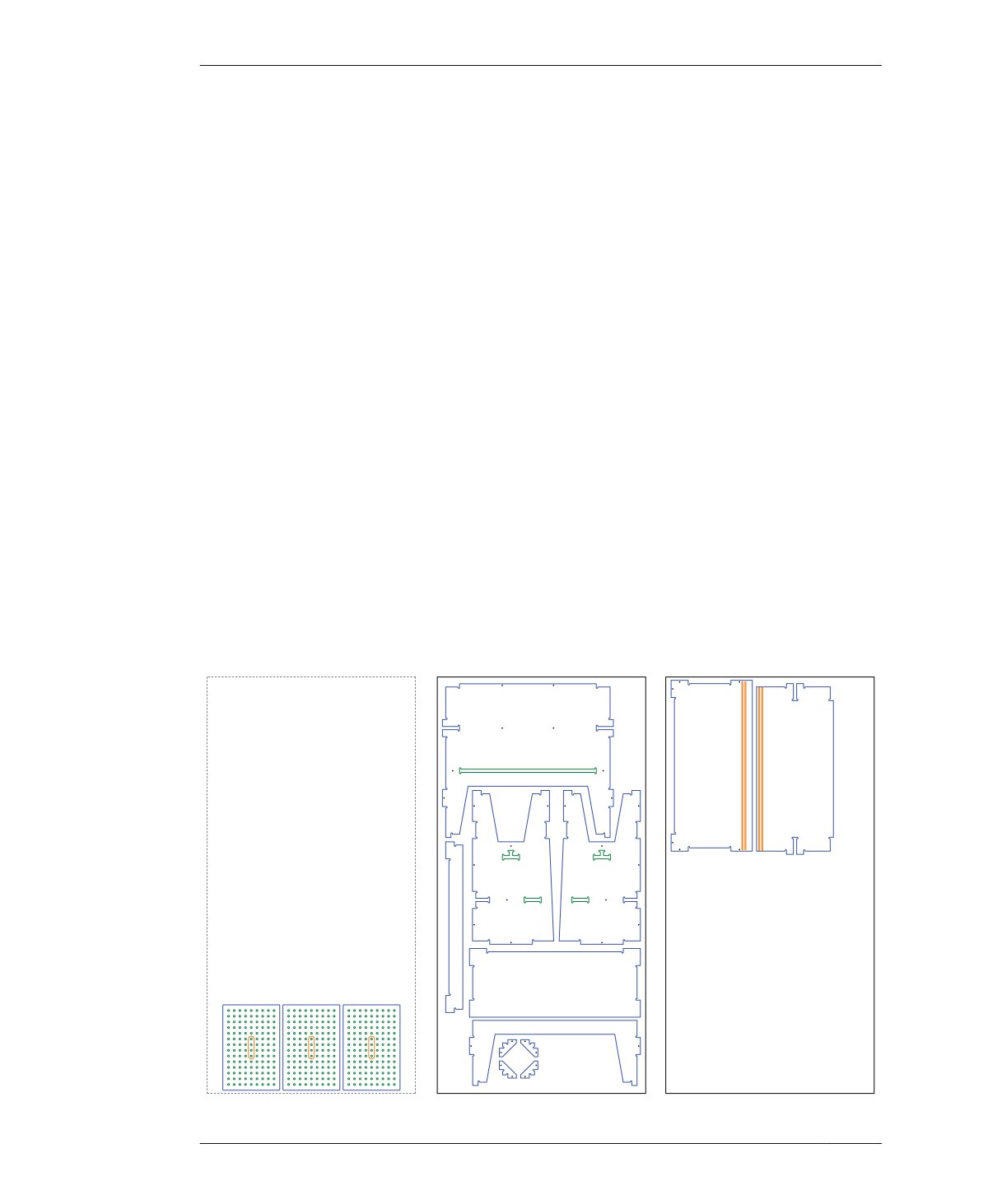
CREATE THE PARTIAL PROTOTPYE
09: First, define toolpaths for the outer cabinet
of the credenza.
◦ Outside toolpaths cut around the outside of
parts.
◦ Define an inside toolpath to cut the slot in
the cabinet sides. (This will be applied later,
when you cut the actual credenza.)
◦ Define the holes toolpath to make inside
cuts for the fastener holes, using a smaller
end mill.
10: Add a pocket toolpath to cut the sliding
door slots on the top and bottom parts. Use
the smaller diameter end mill and set the
pocket cut depth to TMAX/2.
PREPARE TOOLPATHS FOR SLIDING
DOORS
11: For the doors, define toolpaths for outside-
doors and inside-doors. If pocketing or carving
your own patterns, prepare those additional
toolpaths.
12: Assign the smaller diameter end mill to the
inside-door and outside-door toolpaths. Define
additional toolpaths, if exploring other kinds of
end mills or toolpath settings.
CUT SEQUENCE
Refer to “Toolpath Order” on page 195 and
“Create Pocket Toolpaths” on page 242 on cut-
ting pockets and keeping details intact by cut-
ting fastener holes, inside cuts, and pockets,
prior to cutting outside profiles.
13: As you program the cutting sequence, think
about coordinating your end-mill changes with
material changes to make the process more
efficient. For the credenza and its test piece,
you can use the same end mill that cuts fas-
tener holes and pocketed slots for cutting the
door panels from thinner material.
FIGURE 15-5
Toolpaths in the cut file
300
DESIGN FOR CNC
